The yakuza, a mysterious brotherhood associated with the dark world of the Japanese underworld, have long captivated the collective imagination. Between complex rituals, symbolic tattoos and involvement in illicit activities, let's dive into the fascinating world of this criminal organization.
THE ORIGINS OF THE YAKUZA
The history of the yakuza has its roots in a tormented 17th century Japan. At that time, Japanese society was experiencing social unrest, and the yakuza emerged as a unique response to this chaotic context. The term "yakuza" itself has its origins in Japanese card games, the "ya" evoking the number eight and "kuza" the combination of nine, eight, nine, the worst possible score in these games. This association with the idea of failure reflects the original perception of yakuza as outsiders, often rejected by society. Their rise to power was in part a reaction to this rejection, seeking to establish order in social chaos through strict codes of honor and loyalty, a characteristic that persists in contemporary yakuza culture.
The yakuza found their first roots in the “hinin” class, made up of misfits and social outcasts. Bringing together individuals on the fringes of feudal society, they formed alliances to protect each other. Over time, yakuza evolved into guardians of social order, taking on a role similar to medieval knights, but in a Japanese context. This transformation led to the creation of strict codes of honor and a hierarchical structure that still define this mysterious brotherhood today. The origins of the yakuza, marked by the need for survival and the desire to restore order, laid the foundations for a complex and often controversial organization.

THE RITUALS OF THE YAKUZA
The yakuza are rooted in complex rituals that transcend the simple framework of organized crime. At the heart of these rituals is the initiation ceremony, the "sakazuki". During this ceremony, the new member exchanges a glass of sake with the clan leader, symbolizing an unwavering pact of allegiance. This ritual exchange is not simply a formality, but a declaration of fidelity and loyalty to the yakuza brotherhood.
Another emblematic ritual is the "yubitsume", or amputation of the finger. Used as punishment for mistakes committed by a member, this ritual requires the progressive amputation of the phalanges of the finger. Beyond physical pain, "yubitsume" is loaded with symbolic meaning. The gradual loss of fingers hinders a member's ability to effectively wield a sword, thus signifying an increased reliance on the clan for protection.
The "sankin-kotai" is another unique ritual, although less known. Historically, it involved clan members periodically traveling to Edo (the former name of Tokyo) to submit to the shogun. Although this practice has evolved, it illustrates the importance of respect for authorities and higher loyalties within yakuza culture.
These rituals are not just formalities, they serve to cement bonds within the clan, establish hierarchy, and transmit fundamental values of honor and discipline. The yakuza perpetuate these rituals as a way of maintaining an internal moral code, even within a world often associated with transgression. These ritual practices are an echo of the yakuza's origins as guardians of social order in Japan, illustrating how the organization has preserved aspects of its tradition while evolving over the decades.

THE MEANING OF TATTOOS AMONG THE YAKUZAS
Yakuza tattoos are not simply works of body art, but complex symbols that tell the story, status and experiences of each member within the criminal organization. Each design has a deep meaning, and tattoo art is considered a form of visual expression that transcends simple aesthetics. yakuza tattoos are often spread over large parts of the body, covering the back, arms, and sometimes even the face. These works of art embody total devotion to the clan and the desire to bear the indelible marks of one's criminal commitment.
Yakuza tattoos also serve as a means of visual communication within the hierarchy as they indicate a member's status, loyalty, and criminal exploits. For example, a tattoo on the arm can signify a new member, while intricate designs on the back can represent high status within the hierarchy. These marks allow members to recognize each other and quickly interpret another member's position and experience within the fraternity. Thus, yakuza tattoos are not simply ornaments, but visual identity cards that reveal the history, hierarchy and deep loyalty within this clandestine organization >.

HOW DOES THE JAPANESE MAFIA MAKE MONEY?
Gambling:
The yakuza have a stranglehold on gambling in Japan, controlling underground casinos, pachinko parlors and illegal sports betting. These activities generate huge revenues, thus adding to the coffers of the organization.
Drug and arms trafficking:
Involved in extensive criminal activities, the yakuza have ramifications in drug and arms trafficking. Their sophisticated network facilitates illegal trade, adding considerable sums to their coffers.
Politics:
The yakuza maintain complex links with the political world. Their influence in certain political circles allows them to manipulate decisions and guarantee protection for their illegal activities.
Prostitution :
Control of red light districts and prostitution activities constitutes a major source of income for the yakuza. They run brothels and operate the sex trade, contributing to their financial power.

THE PRESENCE OF YAKUZAS IN FILMS
The fascination with the Japanese mafia, embodied by the yakuza, has found a special place in the world of cinema. Directors such as Takeshi Kitano and Kinji Fukasaku have explored the complex world of the yakuza through iconic films such as “Takeshi Kitano’s Sonatine” and “Kinji Fukasaku’s Battles Without Honor and Humanity.” These cinematic works offer gripping looks into the lives of the yakuza, blending violence, honor and betrayal into powerful and gripping narratives.
yakuza films often transcend criminal clichés to explore deeper aspects of Japanese culture and the human psyche. Yakuza characters are often presented as complex anti-heroes, torn between the demands of their brotherhood and their own quest for redemption. These films not only glorify criminality, but seek to understand the motivations and moral dilemmas of yakuza characters, providing nuanced insight into this dark part of Japanese society. The continued presence of yakuza in cinema underlines their singular status as an essential element of Japanese popular culture, while provoking reflection on the complexity of human nature.
We come to the end of this article, to conclude, we can say that the yakuzas remain a fascinating enigma in the global criminal landscape. Their origins, rituals, tattoos and complex financial activities form a complex web of traditions, loyalty and clandestinity. Although often depicted in fiction, the yakuza remain a persistent reality in the dark alleys of Japan, inscribed in the history and social fabric of the country.






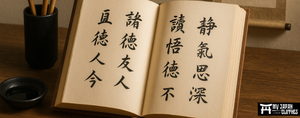










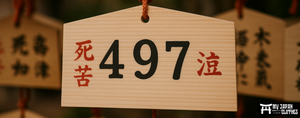








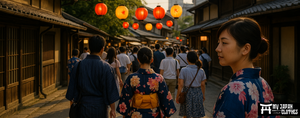





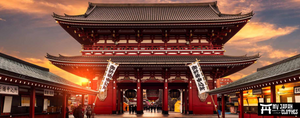
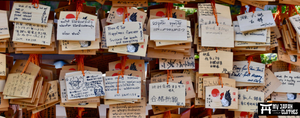

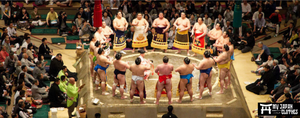
















Leave a comment